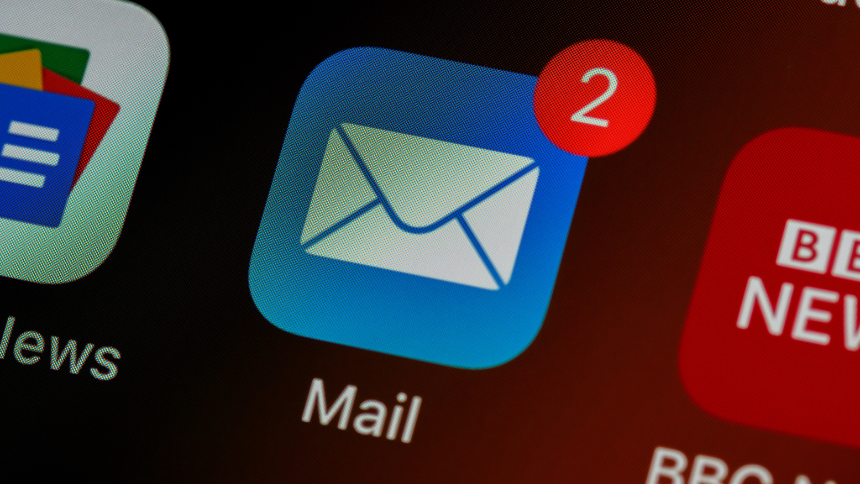The Power of Social Proof in Building E-Commerce Trust
Trust plays a critical role in determining the success of e commerce businesses. But standing out amidst fierce competition can be tough without establishing credibility with potential customers. How do you achieve that?
One effective way is through social proof – the art of highlighting positive feedback from existing customers.
Social proof has the psychological power to instill trust among your audience by displaying customer reviews, ratings, testimonials on your website or social media platforms showcasing high quality offerings that are reliable. This approach even has the ability to enhance visibility and improve search engine rankings by boosting your businesss credibility.
At Nectar we know how vital it is to build trust through social proof for e commerce businesses like yours! We specialize in designing tailored strategies that feature compelling endorsements curated from various sources such as case studies,influencer based content,user generated content etc. all aimed at driving engagement and sales.
When it comes to ecommerce success in todays digital landscape one thing has become clear: Social proof matters. Consumers have countless options at their fingertips when shopping online; therefore they’re naturally drawn towards brands that have established their credibility and earned customer trust. Social proof- prominently displayed customer reviews combined with testimonials- offer an effective means of demonstrating product quality and services’ value.
Integrating social proof into e commerce websites can influence the 93% of your customer read online reviews before buying a product. It’s simple: people are most likely convinced by seeing what others who have already tried products or services think of them! Therefore this form of marketing allows buyers looking for additional information before making decisions about buying from you.
In addition to this traditional method of using customer driven comments/ endorsements offers other types of great boosts to online credibility. For instance industry experts influencers’ approvals, and certifications in the form of badges from widely recognized organizations.
In conclusion building a digital marketing strategy that leverages social proof is vital for driving ecommerce success in todays competitive market. Creating trust among customers is crucial in establishing a strong online presence.
Maximizing Your Digital Marketing Budget
Digital marketing can quickly become costly, especially for small businesses. To help you get the most out of your digital marketing budget, here are five tips to consider:
Set clear goals:
Before starting any digital marketing campaign, it’s essential to set clear goals. Identify what you want to achieve and the metrics you will use to measure success.
Focus on your target audience:
To maximize your digital marketing budget, you need to ensure that your message is reaching the right people. Identify your target audience and tailor your campaigns to appeal to their specific interests and needs.
Invest in social media:
Social media platforms are an excellent way to reach a large audience at a low cost. By investing in social media advertising, you can target specific demographics, increase brand awareness and generate leads.
Create valuable content:
High-quality content is the cornerstone of any successful digital marketing campaign. By creating valuable and informative content, you can establish your brand as a thought leader in your industry, increase website traffic and generate leads.
Analyze and optimize:
It’s essential to analyze the results of your digital marketing campaigns continually. By tracking metrics such as website traffic, conversion rates and social media engagement, you can identify what’s working and what’s not, and optimize your campaigns accordingly.
By following these tips, you can maximize your digital marketing budget and achieve better results with less money spent.
Email Marketing 101: The Basics You Need to Know
Email marketing is a powerful tool that can help you connect with your target audience and drive sales. But if you’re new to email marketing, it can be overwhelming to know where to start.
We’ll break down the basics of email marketing, including what it is, why it’s important, and how to get started.
At its core
Email marketing involves sending promotional messages or newsletters to a list of subscribers. It’s a highly targeted form of marketing that allows you to reach people who have already expressed interest in your products or services. And because email is such a personal channel, it’s a great way to build relationships with your customers.
A powerful tool to connect with your audience and drive sales.
Get started with email marketing
You’ll need a few key components. First, you’ll need an email list. This can be built through a variety of channels, such as sign-up forms on your website, social media, or in-person events. You’ll also need an email marketing platform to send your messages and track your results. There are a variety of options available, ranging from basic tools like Mailchimp to more advanced solutions like HubSpot or Marketo.
Create a compelling message
Once you have your list and your platform, you’ll need to create your messages. This involves crafting a compelling subject line, writing engaging copy, and including eye-catching visuals. You’ll also want to personalize your messages and segment your audience to ensure you’re sending relevant content to each subscriber.
Overall, email marketing is a powerful tool that can help you connect with your audience and drive sales. By following these basic tips and best practices, you can create successful email campaigns that deliver results.
How to find your niche?
Finding a niche is an important step for any business looking to stand out in a crowded market. By focusing on a specific area or industry, you can establish yourself as an expert and build a loyal customer base. Here are some tips to help you find your niche:
1. Assess your strengths and interests
Start by looking inward and identifying what you are naturally good at and what you enjoy doing. This will give you a good starting point for identifying potential niches that align with your passions and skillset.
2. Research the market
Conduct market research to identify gaps in the market and areas that are underserved. Look for areas that have a high demand but a low supply of products or services.
3. Identify your target audience
Understanding your target audience is critical when identifying a niche. Who are they? What are their pain points and needs? Tailoring your niche and messaging to your target audience will help you build a loyal customer base.
4. Test your niche
Once you have a few ideas, test them out. This can be as simple as talking to potential customers or launching a small campaign to gauge interest. Testing your niche will help you determine which direction to take and what adjustments need to be made.
5. Make a decision and commit
Once you have a clear idea of your niche, commit to it and start building your brand around it. Remember that finding your niche is a process and it may take some time to get it right. But once you do, you’ll be on your way to building a successful and sustainable business.
By staying flexible and adapting to changes in the market, you can ensure that your business stays relevant and continues to grow.
Up your digital marketing game
In today’s digital age, it’s more important than ever for businesses to up their game when it comes to their digital presence. Here are five key steps to help businesses succeed in the online space:
🎯
Define Your Target Audience
Understanding your target audience is essential for creating effective digital marketing campaigns. Tailor your content and messaging to meet the specific needs and preferences of your target audience.
👀
Build Brand Awareness and Trust
Building brand awareness and trust is essential for attracting and retaining customers. Use social media, email marketing, and other digital channels to communicate your brand’s message and values.
📈
Stay Up-to-Date with Latest Trends
Digital marketing is constantly evolving, so it’s essential to stay up-to-date with the latest industry trends and best practices. Attend industry events, read industry blogs and publications, and network with other professionals to stay on top of the latest trends.
🏋️
Optimize Your Website
Your website is your digital storefront, so it’s essential to optimize it for search engines and mobile devices. This includes using relevant keywords, optimizing your site structure and navigation, and ensuring your site is mobile-friendly.
🎙️
Be Consistent with Your Messaging and Branding
Consistency is key when it comes to building a strong brand identity. Make sure your messaging and branding are consistent across all digital channels, including social media, email, and your website.
By following these five key steps, businesses can up their digital game and succeed in today’s digital marketplace. By understanding your target audience, building brand awareness and trust, staying up-to-date with the latest trends, optimizing your website, and being consistent with your messaging and branding, you can create a powerful digital presence that attracts and retains customers.
What does client value mean?
As customers become increasingly discerning, it’s essential to provide a product or service that they perceive as having value. But what does value actually mean? Let’s take a closer look:
Types of value
There are four main types of value that customers consider: functional, monetary, social, and psychological. Functional value refers to the product’s ability to solve a problem or meet a need. Social value relates to the impact of the product on the customer’s social status or relationships. Psychological value refers to the emotional connection that customers feel with the product. Monetary value is the price that customers pay for the product or service.

Calculating value
A helpful way to determine the value of your product or service is to use the equation VALUE = TB – TC. This means you should make a comprehensive list of all your total benefits and subtract your total monetary and effort costs. This will give you a clear understanding of the value your product or service provides to your customers.
Reinforcing your brand
By establishing your value proposition, you not only attract customers by recognizing their needs, but you also reinforce your employees’ sense of purpose and ownership in your brand. This creates a positive feedback loop that benefits both your customers and your employees.
In conclusion, generating customer loyalty through your value strategy is essential to maintaining a successful business. By providing a product or service that customers perceive as valuable, you create long-term relationships that can lead to repeated business and positive word-of-mouth referrals. Working with a team of experts who can help you develop and implement a value strategy can be a great investment in the long-term success of your business.
Understanding your client's needs
Understanding your client’s needs is crucial for building successful relationships and creating products and services that meet their needs. One way to understand your client’s needs is by using Maslow’s Hierarchy of Needs. This theory suggests that people have five basic needs that they must fulfill before they can achieve higher levels of satisfaction and fulfillment.
Here’s how you can use Maslow’s Hierarchy of Needs to understand your client’s needs:
Physiological needs
At the bottom of Maslow’s Hierarchy of Needs are physiological needs, which include things like food, water, and shelter. For your clients, this might mean understanding their basic needs for comfort, safety, and security. This can include ensuring that your products or services provide the essentials your clients need to feel comfortable and secure.
Safety needs
The second level of Maslow’s Hierarchy of Needs is safety needs, which include things like job security and financial stability. For your clients, this might mean providing them with a sense of stability and safety in their interactions with your business. This can include transparent pricing and clear communication about your products or services.
Love and belonging needs
The third level of Maslow’s Hierarchy of Needs is love and belonging needs, which include things like friendship, family, and social connections. For your clients, this might mean creating a sense of community around your brand. This can include building relationships with your clients, providing personalized customer service, and creating social media channels for your brand.
Esteem needs
The fourth level of Maslow’s Hierarchy of Needs is esteem needs, which include things like self-esteem and respect from others. For your clients, this might mean providing them with opportunities to build their self-esteem and confidence through your products or services. This can include providing personalized feedback and support, offering opportunities for professional development, and recognizing their achievements.
Self-actualization needs
At the top of Maslow’s Hierarchy of Needs are self-actualization needs, which include things like creativity and personal growth. For your clients, this might mean providing them with opportunities to explore their own interests and passions through your products or services. This can include offering personalized recommendations, creating a sense of inspiration and possibility around your brand, and fostering a culture of learning and growth.
In conclusion, using Maslow’s Hierarchy of Needs can help you understand your client’s needs and create products and services that meet those needs. By providing for their basic physiological and safety needs, building relationships and community around your brand, supporting their self-esteem and confidence, and fostering personal growth and exploration, you can create a powerful connection with your clients and build a loyal customer base.







